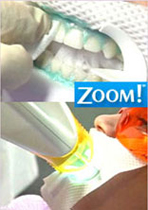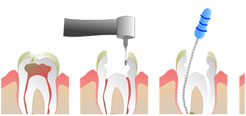www.dentistmarbella.com
treatment types
When a tooth is chipped, cracked or broken then a crown is needed. The fixture is attached permanently onto the existing tooth and is colour-matched to the rest of your teeth.

When a tooth has fallen out then a bridge can be used. The fixture is attached permanently to healthy adjacent teeth by crowns. The fixture is colour-matched to the rest of your teeth so that it is unnoticeable.

The Zoom Advanced Power teeth whitening system has revolutionised the process of whitening teeth. Your current tooth colour is matched to a special chart and you will then be shown what shade your teeth will be by the end of the session. The ‘Zoom! Advanced Power’ machine, lightens teeth by nine to 10 shades in one 45-minute visit (divided into three mini 15-minute sessions). First the gums and lips are covered very carefully with a barrier gel, then a special whitening gel and ultra-violet light is applied to the teeth. The light warms up the oxygen-rich whitening gel and activates it so that stains are removed. If you avoid staining products such as coffee and cigarettes, you probably won’t need another visit for another three to four years.



Dental implants are a permanent substitute for a natural root. A titanium screw or cylinder is placed into a socket and is carefully drilled at the location of the intended tooth. Later once the screw has settled into the bone, a crown or bridge is fixed onto the screw.
There are many advantages for choosing implants over dentures or bridges. They give you natural looking teeth and they will feel like your own. Because they are fixed to the bone, they are more comfortable than dentures as there is no movement. They are also the healthier option as there is no need to drill any of the surrounding teeth. Also, when teeth are missing the bone area where the root used to be begins to shrink, dental implants drastically slow this process down as they take the place of the missing root.
Dental Implants follow two stages:
Stage 1: Dental Implant placement
The implantation area is prepared, implants inserted and the gum is stiched up. Temporary teeth are then fitted. For single implants this process can take just 20 minutes but with more complex cases it takes considerably longer.
Stage 2: Fitting of the crown
Who is suitable for dental implants?
In order to qualify for implants you need to have healthy gums, sufficient thickness of the jawbone and be in a good state of health. The dentist will assess the suitablity of your case during the initial consultation.
Does dental implant treatment hurt?
Implant surgery is performed under local anesthesia and is therefore painless. Following the implantation there may be a little inflammation and minor pain but over-the-counter painkillers that you might use for a headache will be able to alleviate this. On rare occasions where more discomfort is felt then stronger painkillers can be prescribed.

Veneers are like false nails that are used to improve the appearance of chipped, crooked or gapped teeth. They can sometimes be used as a quick alternative to teeth straightening. They are comprised of ultra-thin slices of porcelain that are attached onto the surface of the tooth.

If the nerve of your tooth becomes infected by decay, or damaged by trauma, root canal treatment is often the only way to save your tooth.
Inside your tooth's hard outer shell of enamel is a nourishing pulp of blood vessels, lymph vessels and nerves. The root canals, which contain the pulp, extend to the bone.
Deep tooth decay, or an injury, can cause serious damage and infection to the pulp's nerves and vessels. A "root canal" (the technical term is endodontic treatment) cleans out the infected pulp chamber and repairs the damage.
